During the 19th century, most Americans saw nature as something to be subdued. Men came west in order to trap, hunt, and otherwise exploit the land. Later, as wagon trains began to cross the continent in mass numbers, the fragile land was feeling the effects. However, as the wilderness receded and portions of prehistoric civilization were lost, some began to see the need to protect examples of the nation's heritage. As time went on, appreciation for unspoiled nature grew; spectacular natural areas in the American West were publicized, and the thought of preserving such places began to take effect. Though the actual National Park Service was formed under the National Park Service Organic Act of 1916, it’s ideals of preserving history for future generations have been around for almost 200 years.
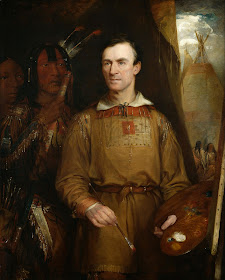 |
| George Catlin US Public Domain |
One such beauty was Yosemite Valley. There, the "national park idea" came to partial fruition in 1864, when legislation was passed to transfer the federally owned valley, as well as the nearby Mariposa Big Tree Grove, to the state so they might "be used and preserved for the benefit of mankind." The Act of Congress was signed by President Abraham Lincoln on June 30, which gave the state of California the lands, on condition that they would "be held for public use, resort, and recreation... inalienable for all time." While Yosemite became a National Park on October 1, 1890, it wasn’t the only natural wonder in the country. The geological wonders of the Yellowstone region, in the Montana and Wyoming territories, remained almost unknown until expeditions traversing the area between 1868 and 1871 published their findings. Expedition members suggested reserving Yellowstone for public use, rather than allowing it to fall under private control. Wyoming and Montana had no state governments yet to whom Yellowstone could be entrusted. Therefore, Yellowstone remained in the custody of the federal Department of Interior, becoming the world's first national park.
The late 19th century also saw growing interest in preserving prehistoric Indian ruins and artifacts on public lands. While the early national parks were being established, a separate movement to protect the prehistoric cliff dwellings, pueblo ruins, and early missions found on public lands in the Southwest arose. Efforts to secure protective legislation began among scientists and leaders in the 1880s and 1890s. The Antiquities Act of 1906 was a general authority for presidents to set aside "historic landmarks, historic and prehistoric structures, and other objects of historic or scientific interest" on lands owned or controlled by the United States as "national monuments." President Theodore Roosevelt took advantage of the act and proclaimed 18 national monuments by the end of his term. By the turn of the 21st century, presidents had proclaimed more than 100 national monuments!
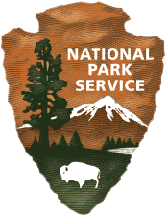 |
| U.S. National Park Service Logo US Public Domain |
 |
| A young man's opportunity for work, play, study & health
Library of Congress/US Public Domain |
 |
| Everglades NP/Gulf Coast Visitor Center Everglades, FL |
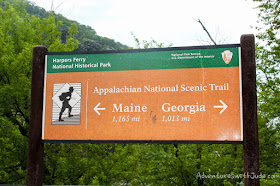 | |
| Approx. Midpoint of Appalachian National Scenic Trail Harpers Ferry NHP Harpers Ferry, WV |
 |
| Hopewell Furnace Hopewell Furnace NHS Elverson, PA |
While the Parks service strives to protect these American lands, at its core is, of course, its historic preservation program. A National Historic Site (NHS) is a single place of national historic significance to the United States. An example would be Hopewell Furnace in southeastern Pennsylvania. A National Historical Park (NHP) is an area that generally extends beyond single properties or buildings, and its resources include a mix of historic and sometimes significant natural features; Independence National Historical Park in Philadelphia is a 55-acre urban area that contains Independence Hall, the Liberty Bell, Benjamin Franklin’s Court, and other sites significant to the American Revolution. Military sites are preserved under one of four designations: National Battlefield (ie Fort Necessity), National Battlefield Park (Manassas), National Military Park (Gettysburg) and a single National Battlefield Site (Brice’s Cross Roads). All of these require Congressional approval to create.
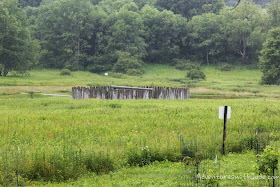 |
| Fort Necessity Fort Necessity National Battlefield Fayette County, PA |
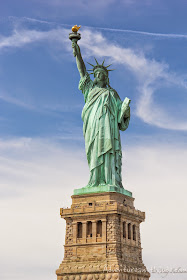 |
| Liberty Enlightening the World Statue of Liberty NM New York, NY |
Despite current attempts at legislative changes to the Antiquities Act, National Monuments remain areas preserved by presidential action authorized by the 1906 Antiquities Act. Included in the registry of National Monuments is the Statue of Liberty NM. President Lyndon B. Johnson added Ellis Island in 1965 while President Calvin Coolidge invoked the Antiquities Act in 1924 when he designated the glorious statue “Liberty Enlightening the World” that welcomed thousands of immigrant to be a national treasure. The San Gabriel Mountains NM is the newest national monument, established in October 2014 by President Barack Obama.
The National Historic Preservation Act of 1966 authorized the bureau to maintain a comprehensive National Register of Historic Places, which has become America's official list of cultural properties worthy of preservation. Those properties receive special consideration in federal project planning, federal grants, and technical assistance.
Since 1872, the United States National Park System has grown from a single public reservation called Yellowstone National Park to embrace over 450 natural, historical, recreational, and cultural areas throughout the United States, its territories, and island possessions. While each carries its own significance, each and every site embodies the National Park Service’s mission of preserving the “unimpaired the natural and cultural resources and values of the national park system for the enjoyment, education, and inspiration of this and future generations.”
©2012- 2015 Adventures with Jude. All rights reserved. All text, photographs, artwork, and other content may not be reproduced or transmitted in any form without the written consent of the author. http://adventureswithjude.com

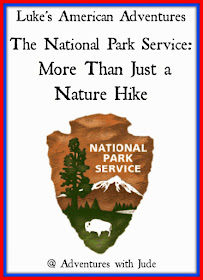
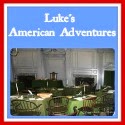
We visited Antietam and Harper's Ferry last month. It was great! We also made it to D.C. but it was oh, so very cold so we didn't get to enjoy much of it :( but we're planning another trip for the fall. One day I'd like the hike the whole trail but we'll see what the Lord has in store.
ReplyDeleteI'd love to Thru-Hike but I don't think I have that kind of stamina. I think "a piece in each state" is going to go on my "Bucket List" though.
ReplyDeleteI'll definitely need to get back into shape before attempting it. If I do it in the fall when it's not so hot or cold I think it will be do-able.
ReplyDelete